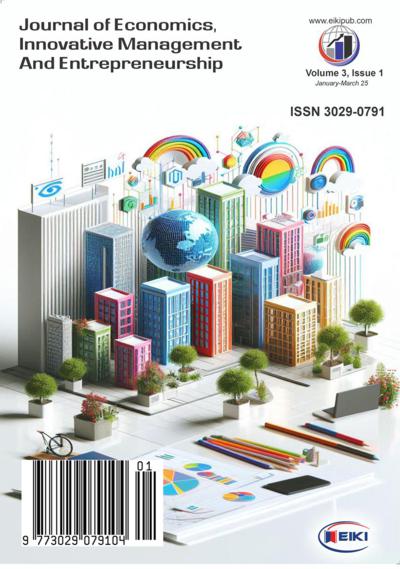Opportunities and Challenges in Agricultural Product Marketing: A Sociological Analysis of Bamyan Province, Afghanistan
Main Article Content
Abstract
This research aims to sociologically examine the opportunities and challenges of marketing agri-cultural products in Bamyan Province, Afghanistan, and proposes solutions to enhance local, na-tional, and international marketing systems. The study adopts a mixed-methods approach, inte-grating both quantitative and qualitative methodologies to provide a comprehensive analysis. The target population includes farmers from eight districts of Bamyan, as well as educated individuals, experts, and employees from government and non-governmental organizations. Data was collected through interviews, focus group discussions, and structured questionnaires. Quantitative data were analyzed using SPSS, while qualitative data were processed through MAXQDA, following a mixed-method analytical framework. The findings reveal that agriculture serves as the primary source of income for households in Bamyan, playing a pivotal role in sustaining livelihoods. Key crops include potatoes, wheat, and beans, with apricots being particularly significant in districts such as Kahmard. However, most farmers lack formal marketing training and rely on traditional methods and local intermediaries. This, combined with inadequate infrastructure and limited access to na-tional and international markets, significantly reduces profitability and negatively impacts living standards. Additionally, the lack of coordination among farmers underscores weaknesses in forming effective agricultural cooperatives. Social institutions and marketing support committees, particularly in the post-Republic era, have shown limited activity. Women’s participation in agri-cultural production and marketing is further constrained by social norms and a lack of training, limiting their economic contributions. Based on these findings, the study recommends several measures to address these challenges. These include developing adequate infrastructure, enhancing marketing training programs, and formulating supportive policies to improve marketing systems and increase farmers’ income. Strengthening agricultural cooperatives, promoting gender-inclusive training, and fostering better coordination among stakeholders are also critical to ensuring sus-tainable agricultural development in Bamyan Province.
Article Details

This work is licensed under a Creative Commons Attribution 4.0 International License.
References
Abdalla, Z., & Yunsheng, L. (2015). Impact of climate change on agriculture sector in Egypt and China. In 4th International Conference on Agriculture and Horticulture. Beijing, China. https://www.walshmedicalmedia.com/proceedings/impact-of-climate-change-on-agriculture-sector-in-egypt-and-china-16257.html
Ahmadi, R. (2024). Poverty and Social Policies Related to Poverty in Afghanistan: The Example of Bamyan City (Doctoral dissertation). Akdeniz University, Antalya. https://tez.yok.gov.tr/UlusalTezMerkezi/tezSorguSonucYeni.jsp
Alamyar, R., & Boz, I. (2018). Problems and Solutions in Rice Production and Marketing in Takhar Province of Afghanistan. International Journal of scientific research and management, 6(12), 839-944. https://doi.org/10.18535/ijsrm/v6i12.em02 DOI: https://doi.org/10.18535/ijsrm/v6i12.em02
ALFRED. (2024). Gross Domestic Product Per Capita for Afghanistan. https://fred.stlouisfed.org/series/PCAGDPAFA646NWDB
Burian, P., Macek, R. and Krepl, V. R. (2010). Concept of agriculture development in Logar Province, Afghanistan. Agricultura Tropica et Subtropica, 43(4), 366-372. https://www.agriculturaits.czu.cz/pdf_files/vol_43_4_pdf/burian.pdf
Directorate of Economy of Bamyan Province. (2019). Profile of Bamyan Province (Economic and Social Outlook). Ministry of Economy, Islamic Republic of Afghanistan. Publications of the Ministry of Economy. [in Persian]. https://moec.gov.af/sites/default/files/2019-10/Bamyan%20Province%20Book%20Cover.pdf
Ghulami, M. (2017). Assessment of climate change impacts on water resources and agriculture in data-scarce Kabul basin, Afghanistan. COMUE Université Côte d’Azur; Asian institute of technology. https://theses.hal.science/tel-01737052v1
Goud, M. V., & Narahari, C. L. (2022). A study on marketing challenges faced by rural areas. Indian Scientific Journal Of Research In Engineering And Management, 6(10), 1-10. https://ijsrem.com/download/a-study-on-marketing-challenges-faced-by-rural-areas/ DOI: https://doi.org/10.55041/IJSREM16576
Hans, V. B., & Govindaswamy, M. (2024). Agricultural Marketing in India: Challenges, Opportunities, and Transformations. Medicon Agriculture & Environmental Sciences, 6(2), 39-54. https://themedicon.com/pdf/agricultureenvironmental/MCAES-06-161.pdf DOI: https://doi.org/10.2139/ssrn.4658600
Hanson-DeFusco, J., Sobolov, A., Stanekzai, S., McMaster, A., Popalzai, H., Shah, H., Shi, M., & Kumar, N. (2025). The association of diminished quality of life of Afghan adults’ psychosocial wellbeing, in the era of the Taliban 2.0 government. PLOS Mental Health 2(1), e0000118. https://doi.org/10.1371/journal.pmen.0000118 DOI: https://doi.org/10.1371/journal.pmen.0000118
Hariharan, S., Barath, S., Suresh Kumar, K., & Janani, V. (2023). Challenges Faced by Small-Scale Farmers in Rural Agricultural Marketing: A Case Study in India. Asian Journal of Applied Science and Technology, 7(3), 138-149. https://ajast.net/data/uploads/83191.pdf DOI: https://doi.org/10.38177/ajast.2023.7311
Hasell, J. (2022). From $1.90 to $2.15 a day: the updated International Poverty Line. OurWorldinData.org. https://ourworldindata.org/from-1-90-to-2-15-a-day-the-updated-international-poverty-line
Hikmat, C. A., & Ahmadi, R. (2023). The Impact of University Closures on Students’ Motivation After the Fall of the Afghan Government by the Taliban. Journal of Social and Political Sciences, 6(4), 47-59. https://doi.org/10.31219/osf.io/439hx DOI: https://doi.org/10.31014/aior.1991.06.04.444
Honaryar, G. (2019). An Economic Analysis of Production, Marketing and Value Chain of Potato in Bamyan Province. International Journal of Research -Granthaalayan, 7(10), 1–25. https://doi.org/10.29121/granthaalayah.v7.i10.2019.371 DOI: https://doi.org/10.29121/granthaalayah.v7.i10.2019.371
Khalate, S. B. (2024). A Study of Marketing Challenges Faced By Agro Producers Through Agricultural Produce Marketing Committees In The Of Maharashtra. Journal of Advanced Zoology, 45(S-4). 433-437. https://doi.org/10.53555/jaz.v45iS4.4233 DOI: https://doi.org/10.53555/jaz.v45iS4.4233
Lalzai, F., Jamali, A., Naziri, A. M., and Jamali, N. J. (2023). Marketing Issues Faced by Potato Growers and Intermediaries in Parwan, Afghanistan. Journal for Research in Applied Sciences and Biotechnology, 2(5), 113-118. https://doi.org/10.55544/jrasb.2.5.19, Available DOI: https://doi.org/10.55544/jrasb.2.5.19
Najafabadi, M. O. (2011). Agricultural Marketing Challenges and Barriers in Iran. African Journal of Business Management, 5(35),13580-13581. https://academicjournals.org/journal/AJBM/article-full-text-pdf/E12088145455
Pande, A. B. (2022). Rural Marketing: Problems & Strategies. International Journal for Administration In Management, Commerce And Economics, 123-128.
Rahimi, M. S. and Artukoğlu, M. (2021). Problems Facing Agricultural Product Exporters and Solutions: A Case Study from Afghanistan. Tarım Ekonomisi Dergisi, 27(2), 101-112. https://doi.org/10.24181/tarekoder.990296 DOI: https://doi.org/10.24181/tarekoder.990296
Rahimi, M. S., & Artukoğlu, M. (2023). A Research on the Socioeconomic Structure and Perspectives of Agricultural Products Exporters in Afghanistan. ANADOLU Ege Tarımsal Araştırma Enstitüsü Dergisi, 33(1), 134-148. https://doi.org/10.18615/anadolu.1310061 DOI: https://doi.org/10.18615/anadolu.1310061
Sarhadi, W. A., Samadi, A. F., & Kim, T. (2014). Sustainable Agricultural Development in Afghanistan. Journal of Developments in Sustainable Agriculture, 9, 41-46. https://www.jstage.jst.go.jp/article/jdsa/9/1/9_41/_pdf
Tagar, H. K. (2014). Global Challenges and Issues in Agricultural Marketing and Their Impact on Growers Performance (A Case Study of Sindh – Pakistan). International journal of innovative research and development, 3(13), 314-318. https://www.internationaljournalcorner.com/index.php/ijird_ojs/article/view/135423
World Bank Group. (2024). Afghanistan Development Update. https://thedocs.worldbank.org/en/doc/126f9684f0c7ff20248c0c7bf45ccccd-0310012024/original/Afghanistan-Development-Update-December-2024-Final.pdf

